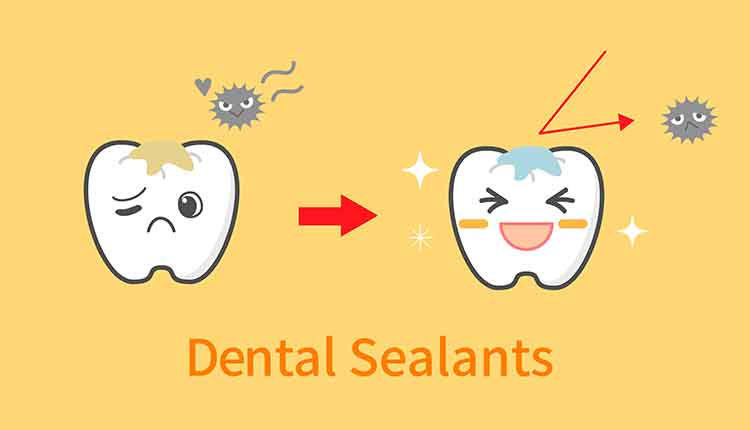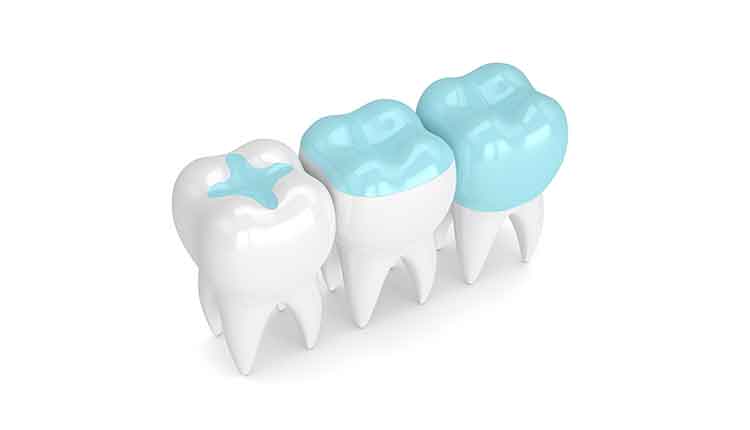
Childhood and adolescent caries continues to be one of the most common chronic diseases, impacting youth around the world. In light of the myriad health challenges presented by the COVID-19 pandemic, discussion of caries prevention and management is not front and center. However, educating families and patients about how this disease can be prevented remains important.
Photo Credit: robertprzybysz / iStock / Getty Images Plus

Resin-Based Sealants
Resin-based sealants (RBS) are commonly used in clinical practice and most contain bisphenol A-glycidyl methylacrylate (Bis-GMA). They can be further classified by methods of polymerization, filler content, and color. Fluoride-releasing particles can be added to light-polymerizing RBS to further prevent caries, although more research is needed to demonstrate their efficacy. Many clinicians believe that filled RBS are superior to unfilled sealants due to their increased wear strength. However, there are drawbacks to filled RBS, including lower penetration rates into pits and fissures and the need for occlusal adjustment. Most RBS require a dry field prior to placement, although one RBS product can be placed in a moist field.
Photo Credit: sumaki / iStock / Getty Images Plus

Reduce Bisphenol-A Exposure
Parents may resist sealant placement due to concerns about bisphenol A (BPA) exposure. BPA levels do increase for up to 1 hour post-sealant placement, but these levels then decrease to normal base values. The following recommendations should be followed to minimize BPA exposure during sealant placement:
- Use a rubber dam to minimize dissolution of BPA in the saliva.
- Perform a 30-second air/water rinse post-placement in addition to using a cotton tip applicator or cotton roll to wipe the sealed surfaces to eliminate the last layer of resin unpolymerized by oxygen.
- Place up to only four sealants at a time.
Photo Credit: ayo888 / iStock / Getty Images Plus

Glass Ionomer Sealants
Glass ionomer (GI) sealants are cement-based and widely used for their slow releasing fluoride properties. The greatest amount of fluoride release is 24 hours after placement, and continues in lessening degrees over time.16 GI sealants are classified as low and high viscosity. Many clinicians prefer GI because success in retention is not dependent on a dry field. “Moisture-friendly” GI sealants are easy and quick to place. When resins are combined with GI, they are called resin-modified glass ionomers (RMGI). The resin composite component makes RMGI even less sensitive to moisture and provide a longer working time.
Photo Credit: karelnoppe / iStock / Getty Images Plus

Polyacid-Modified Resin Sealants
Polyacid-modified resin sealants, also known as compomers, combine the properties of resin-based sealants with the fluoride-releasing and adhesive properties of GI sealants. Polyacid-modified resin sealants adhere easily to the enamel and are less water-soluble. They are also not highly technique sensitive, making them easier to apply in young and uncooperative patient populations.
Photo Credit: Alexandra Turkina / iStock / Getty Images Plus

Educating Patients About Sealants
A 2015 survey of 3,350 participants age 18 and older was recently analyzed to determine adult and parent knowledge of dental sealants. The study concluded that 46.3% of adults and 55% of parents knew about sealants. Sealant knowledge was highest among those whose income was greater than 200% of the federal poverty level and those with more than a high school diploma.

